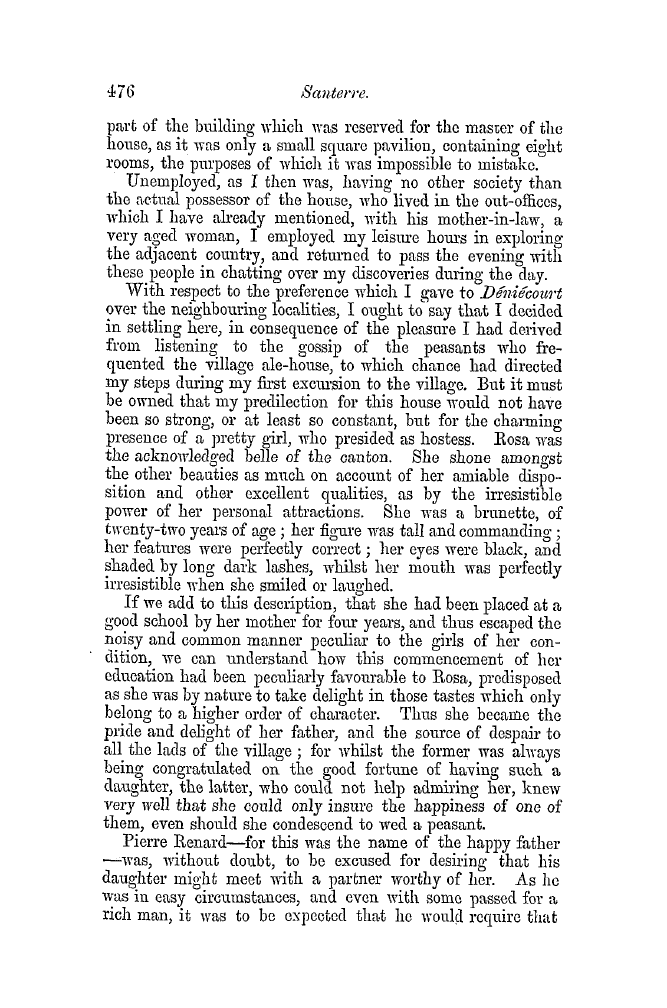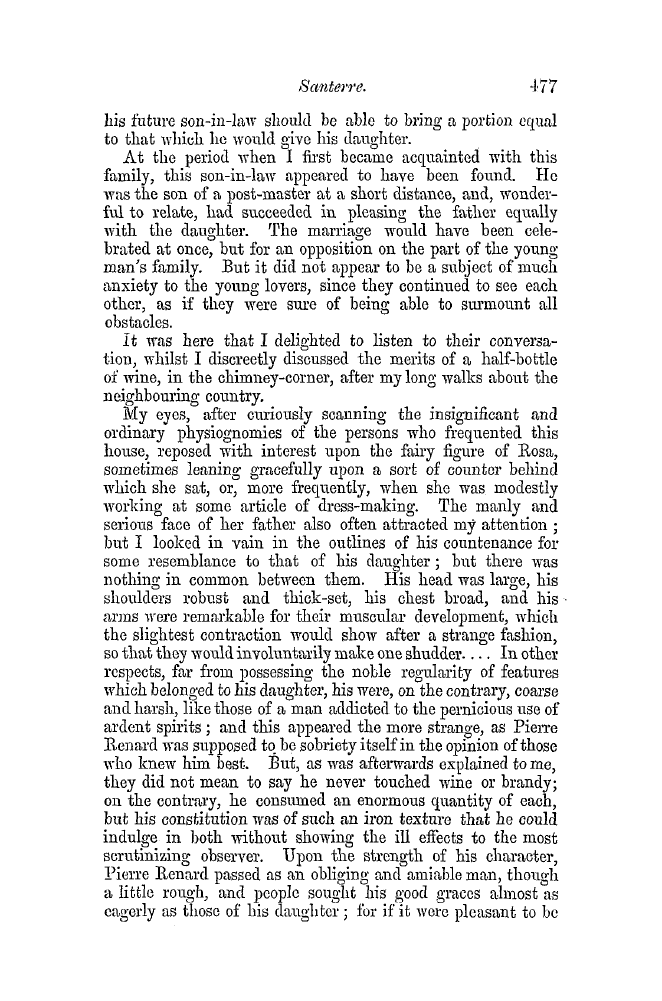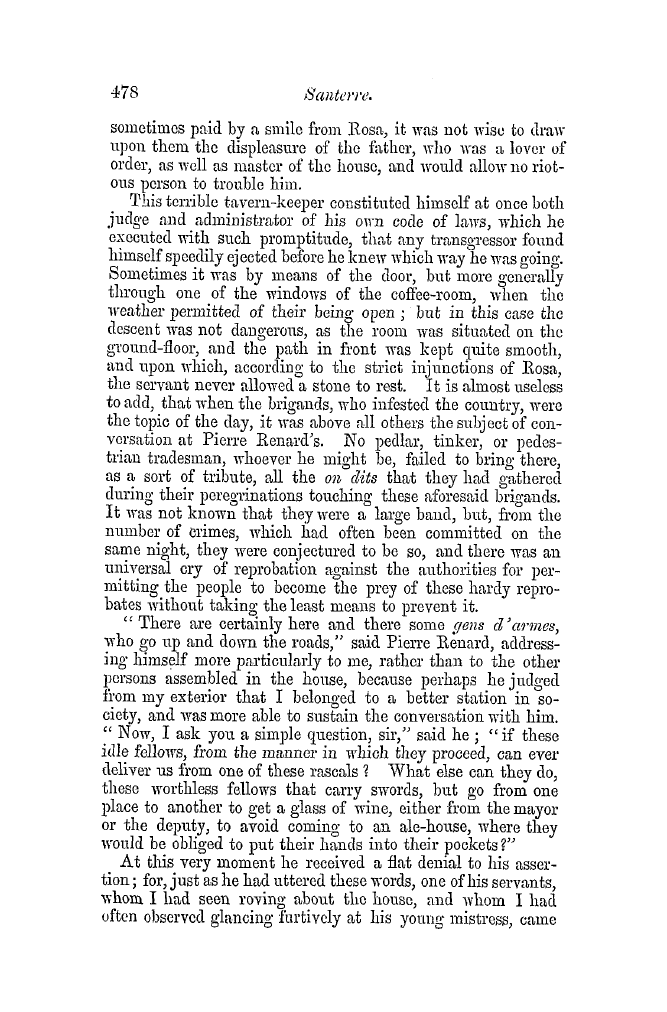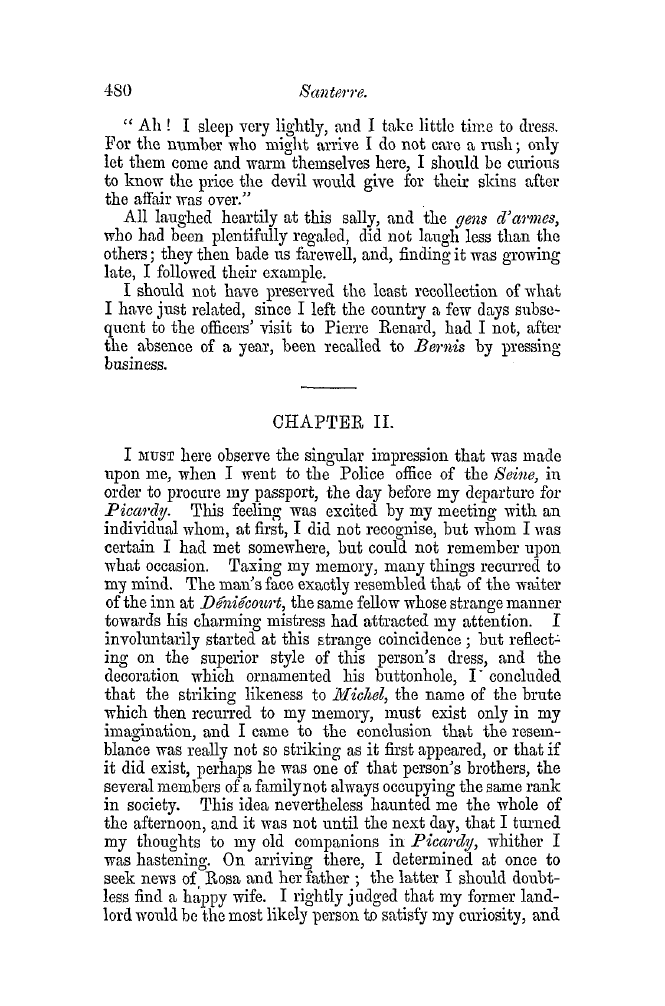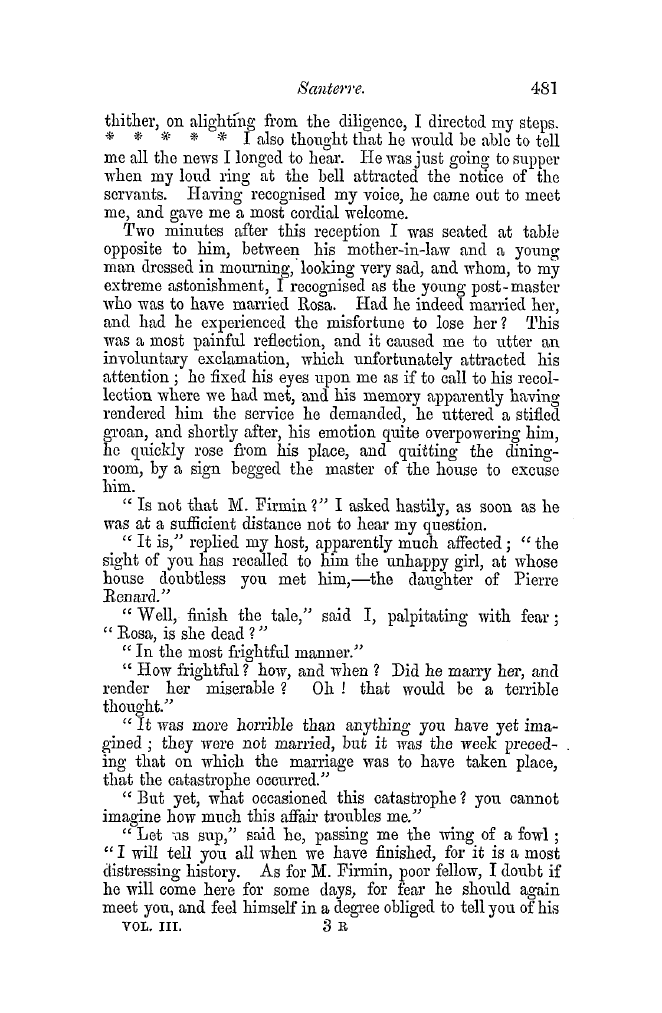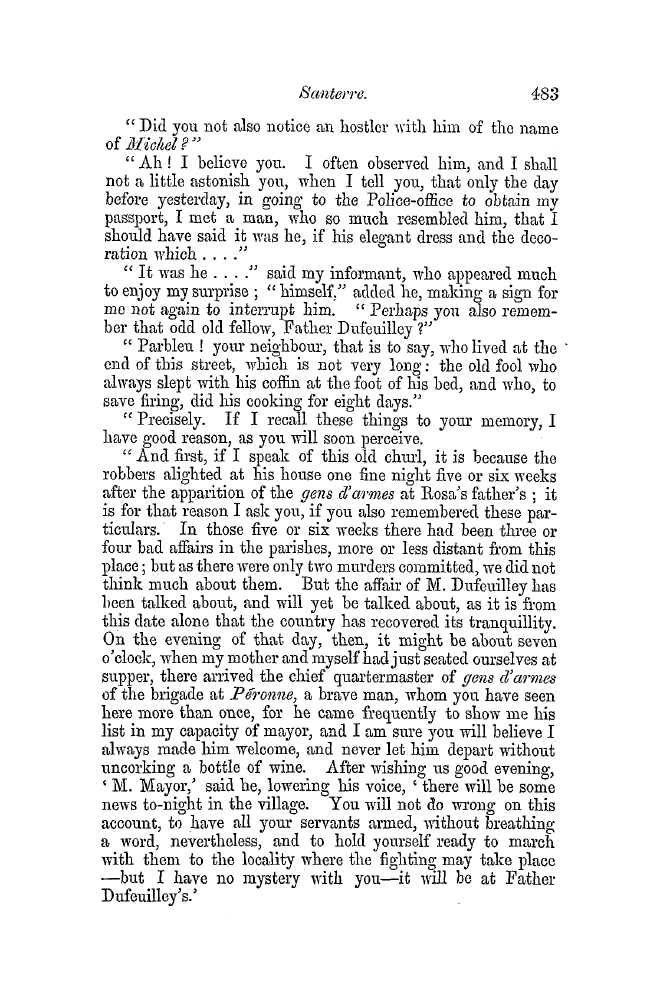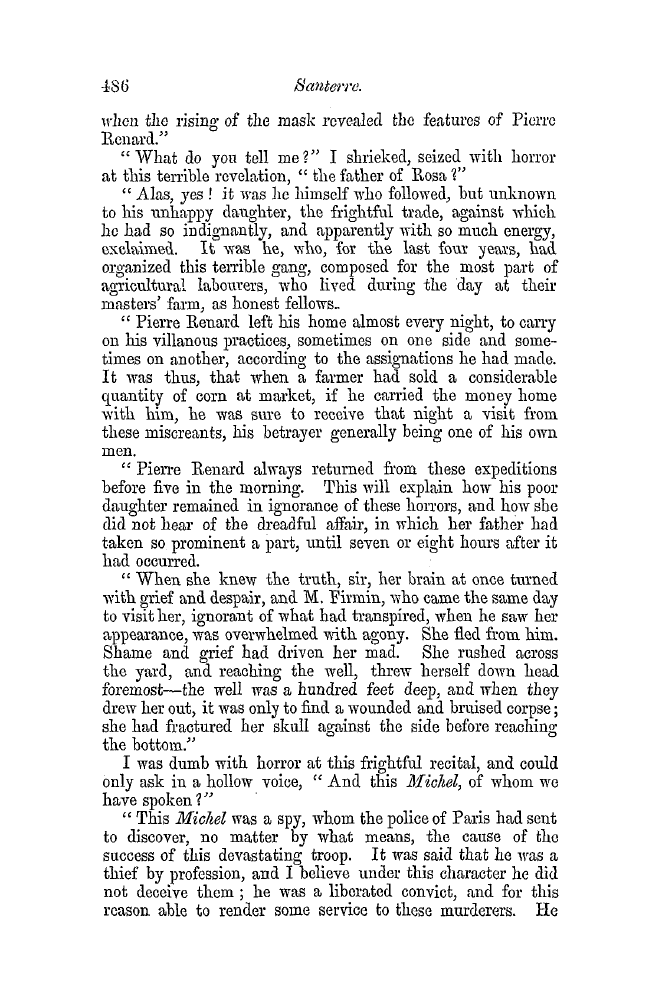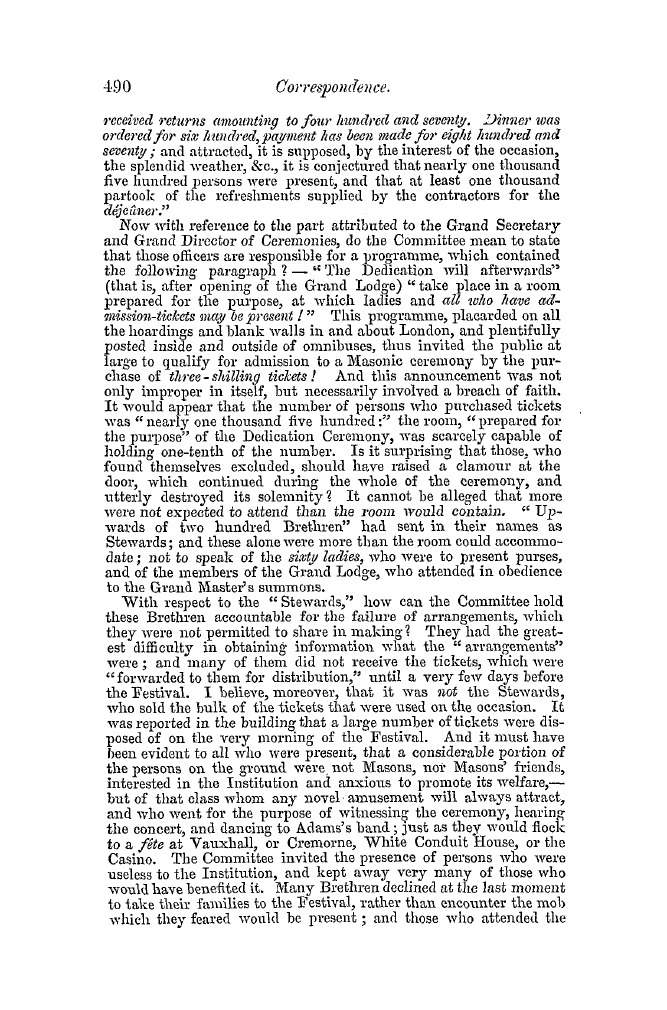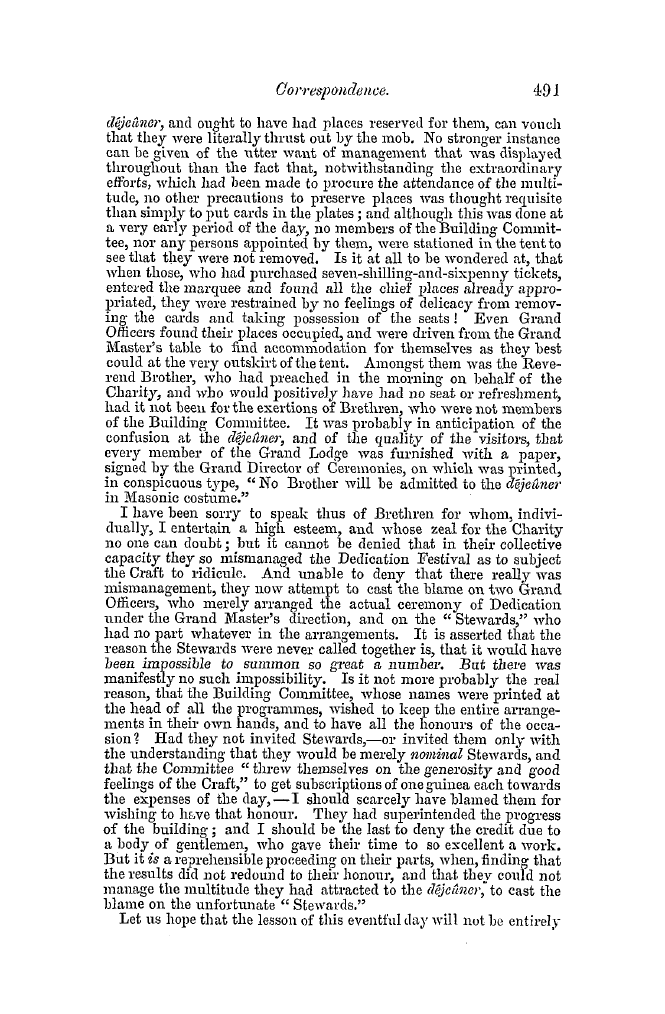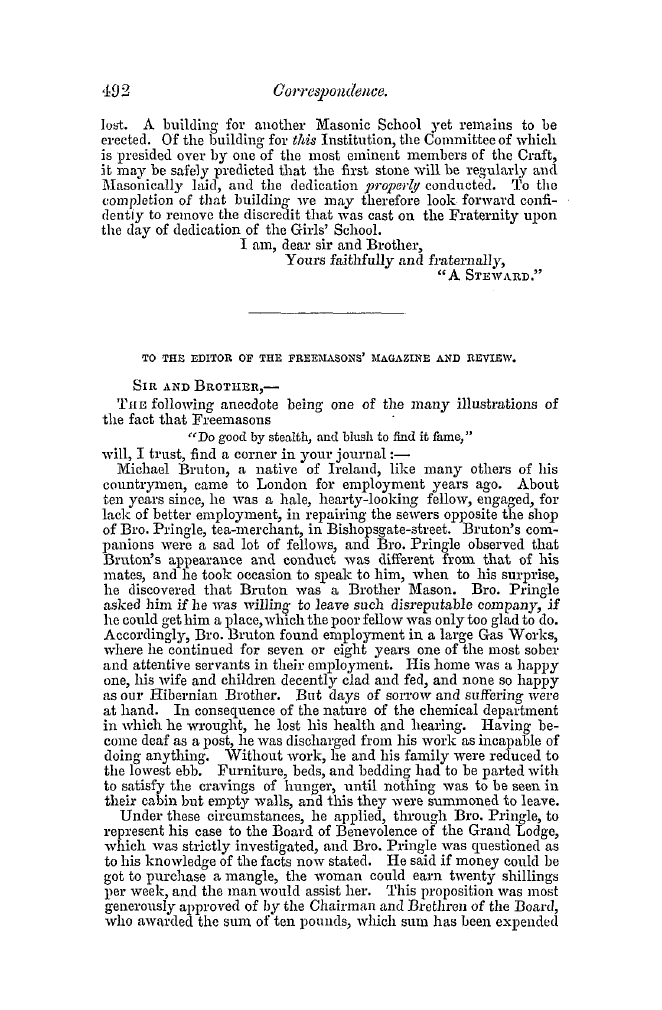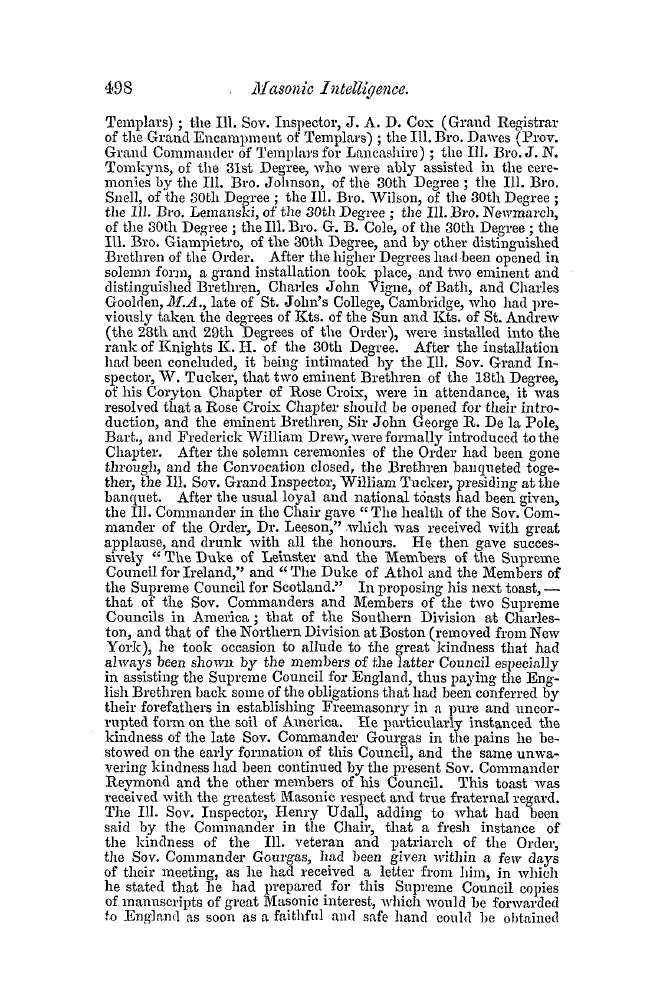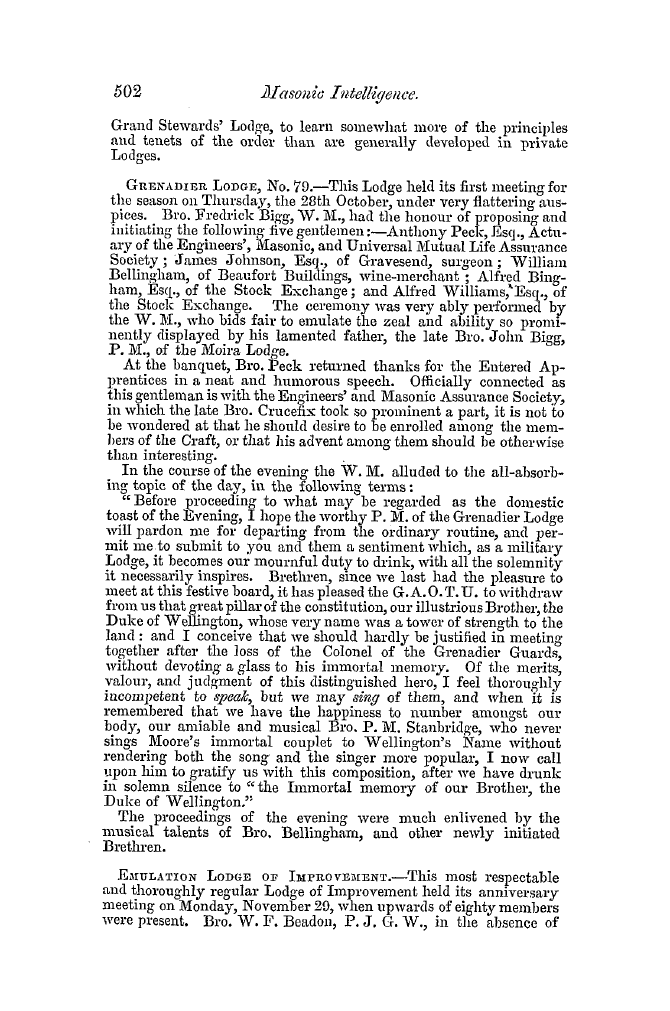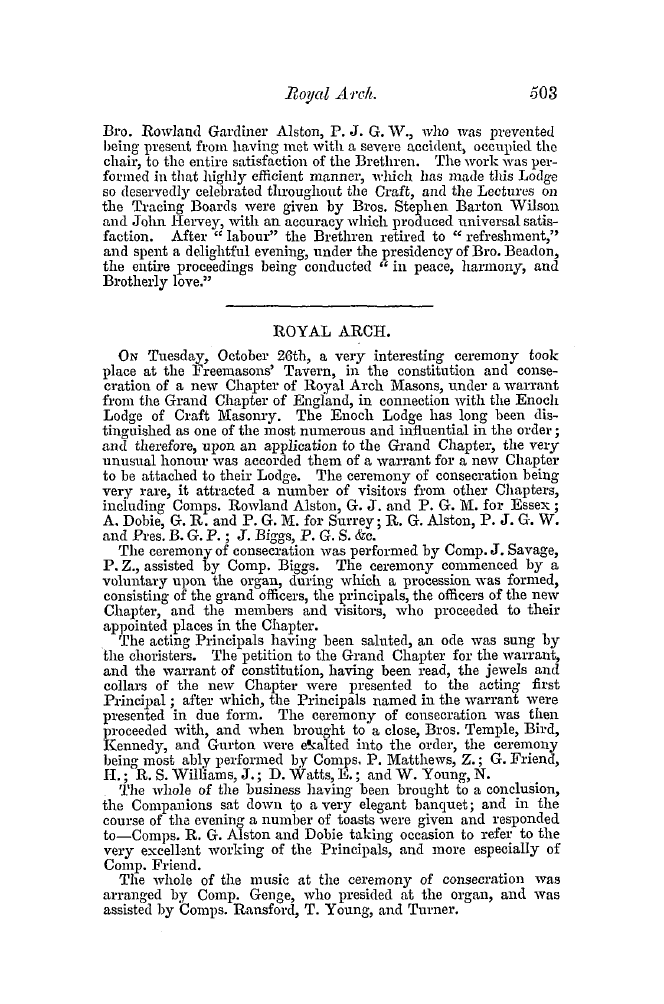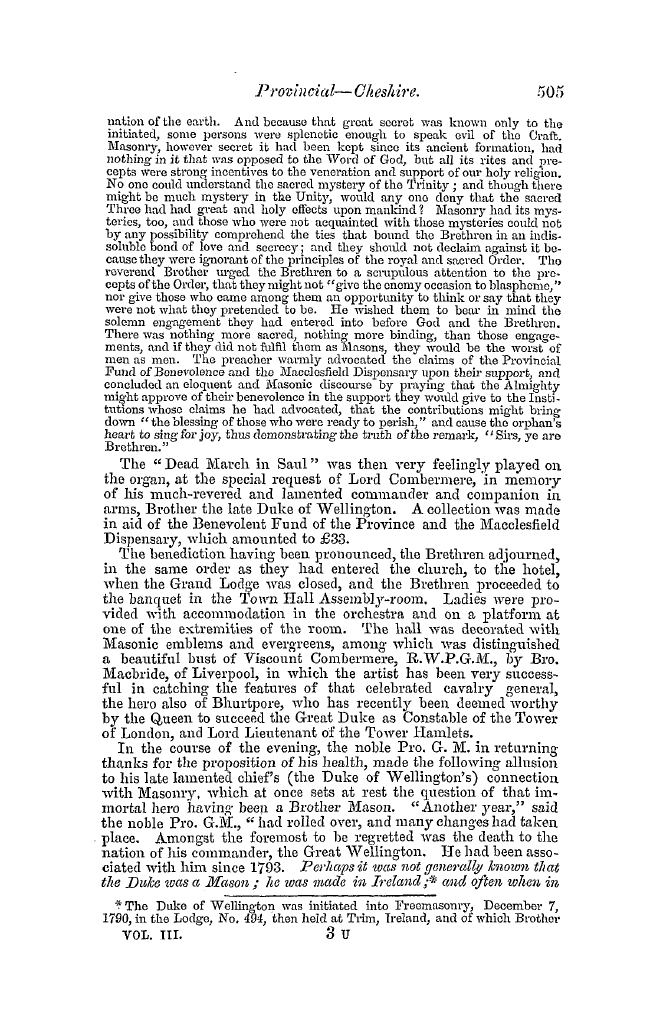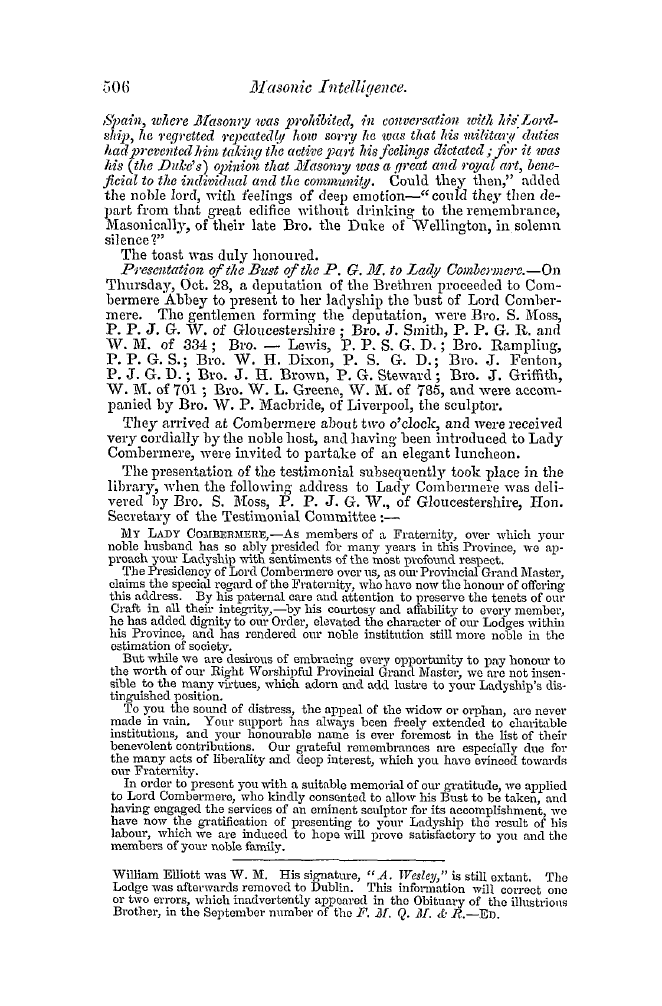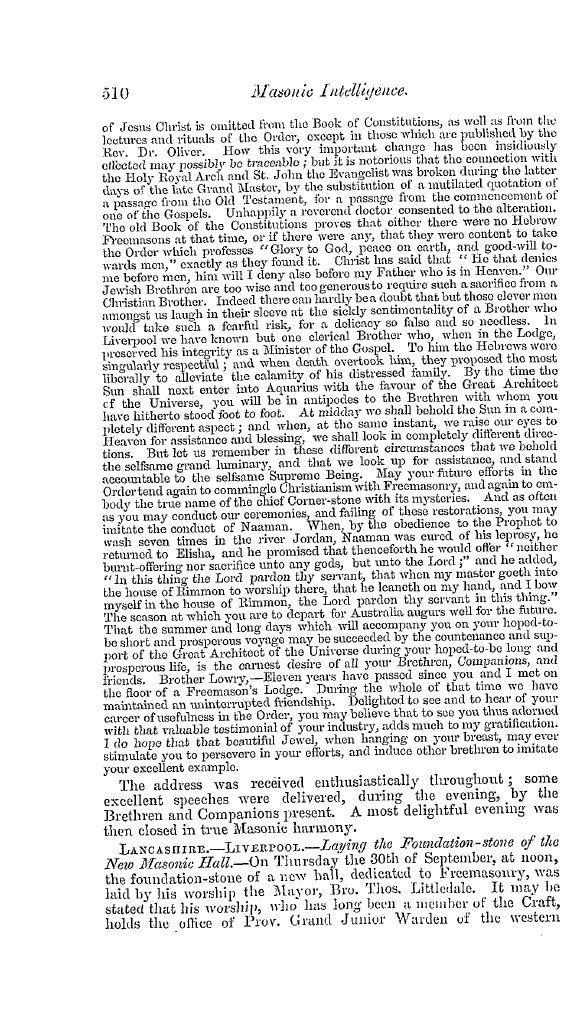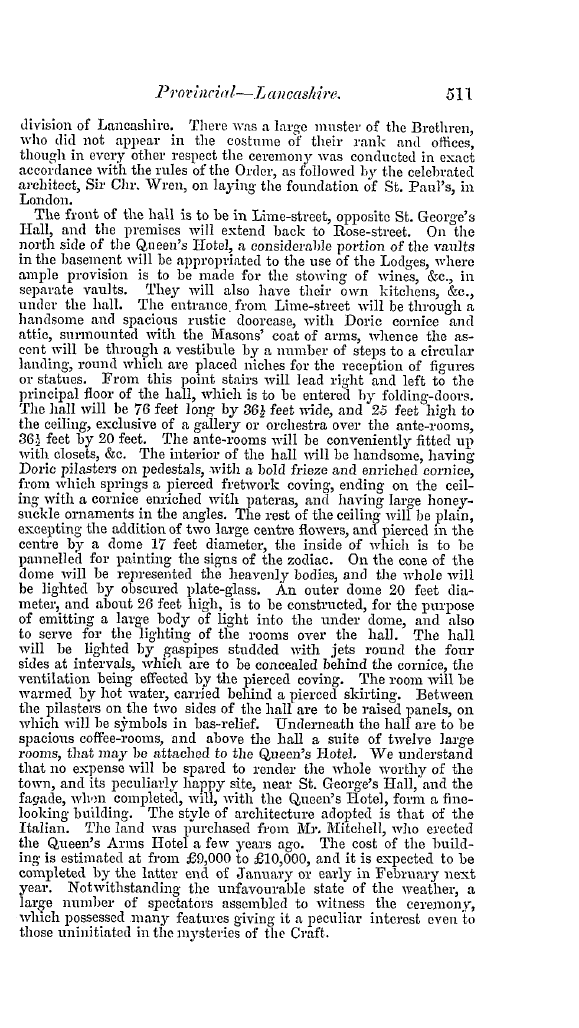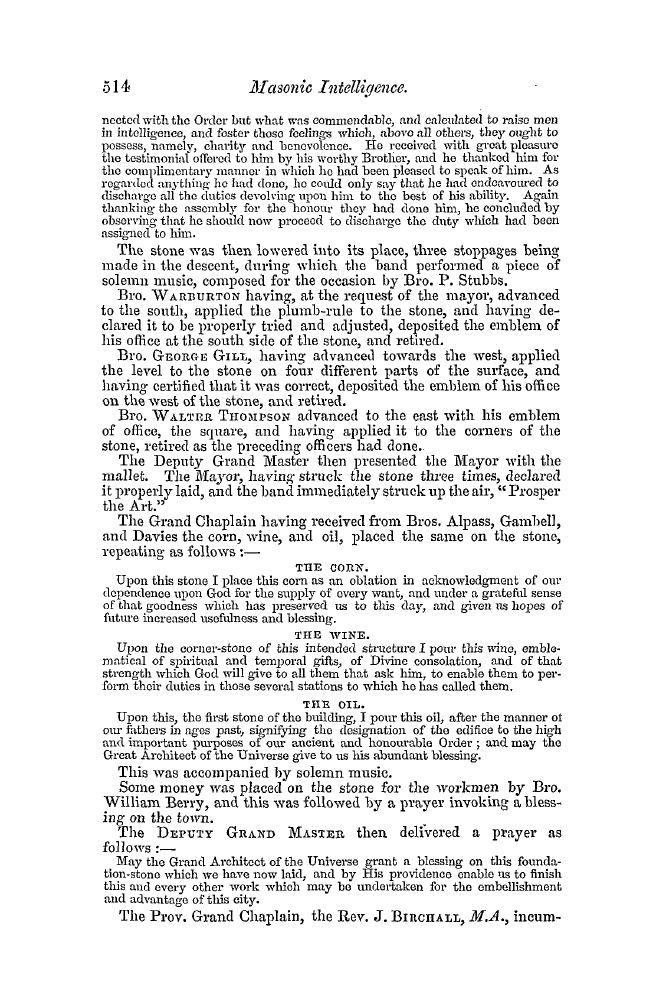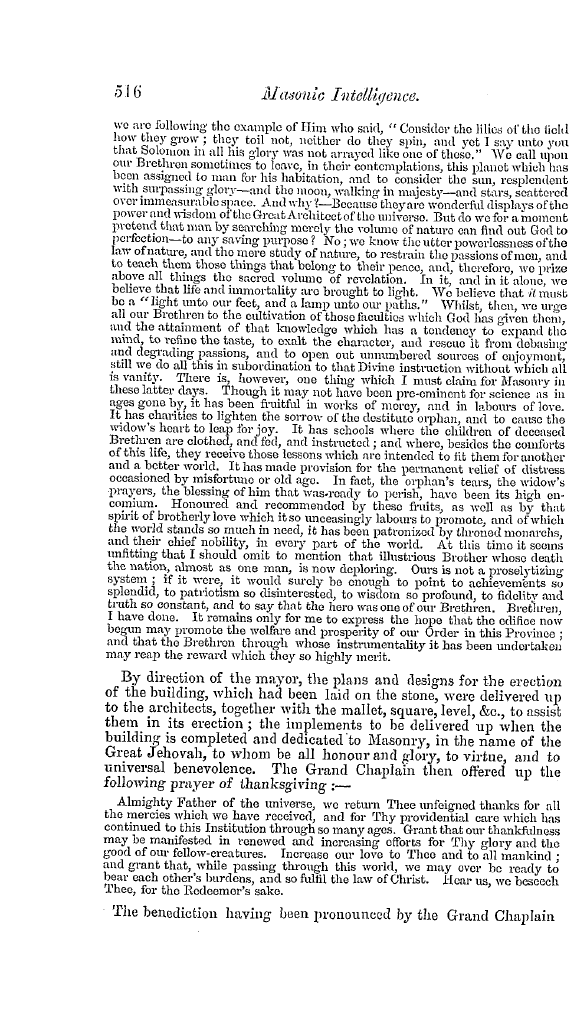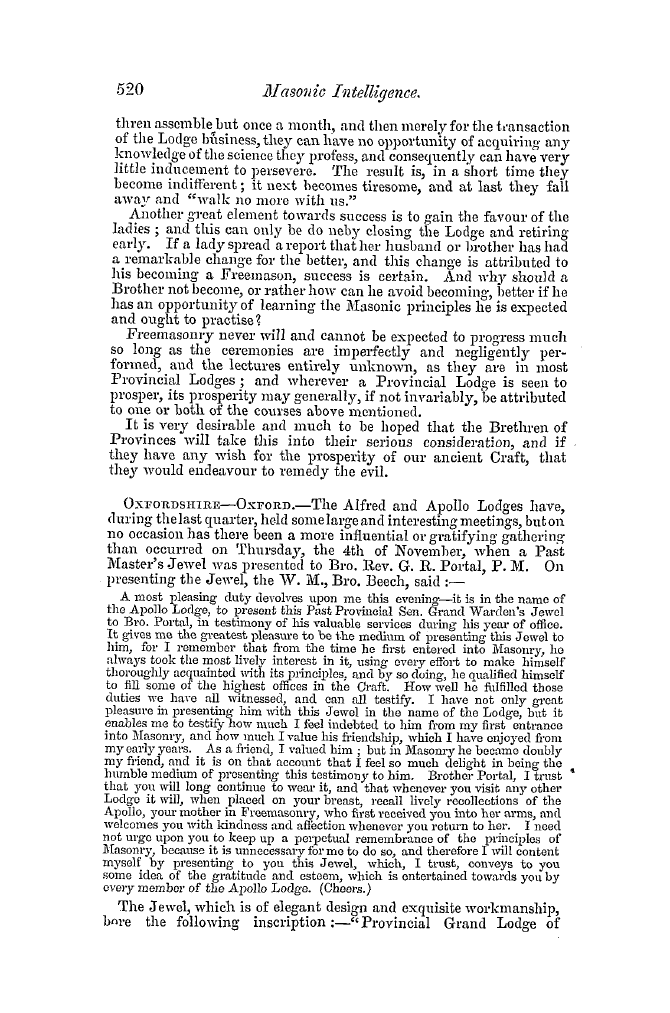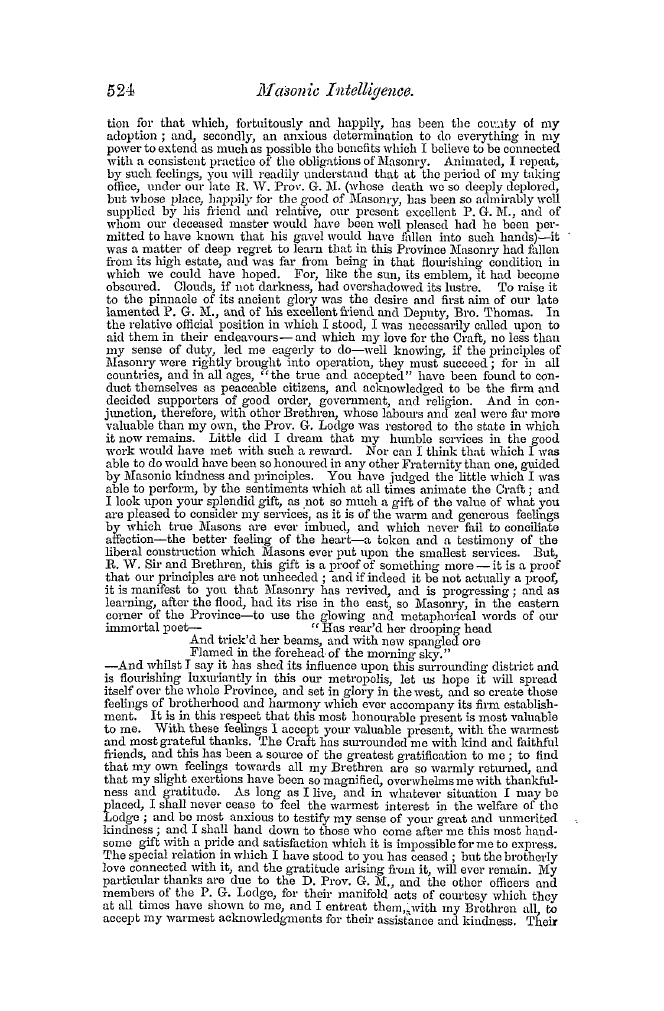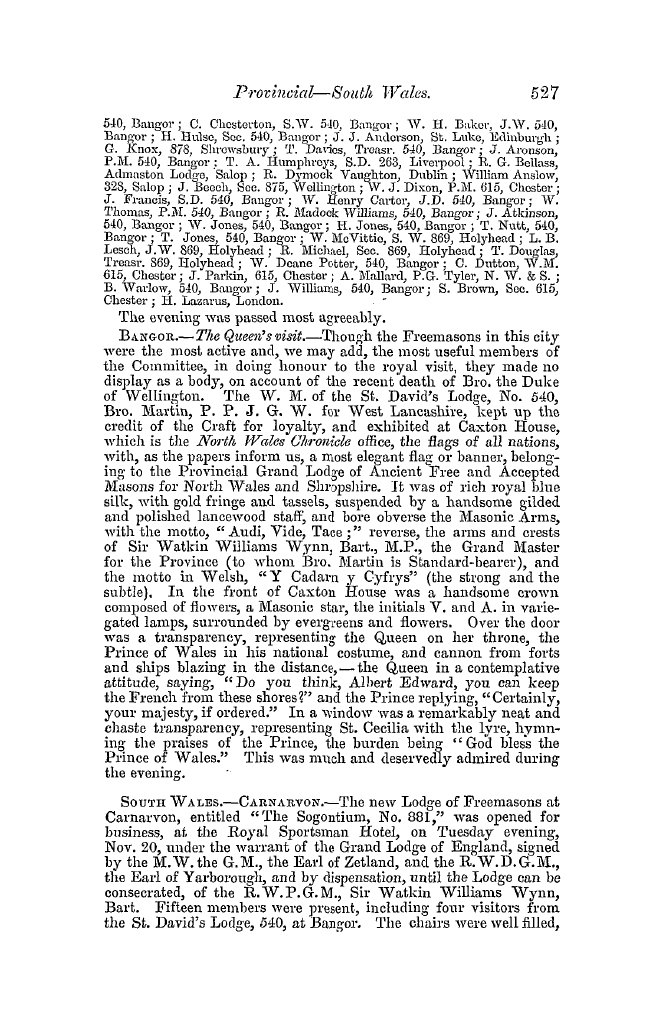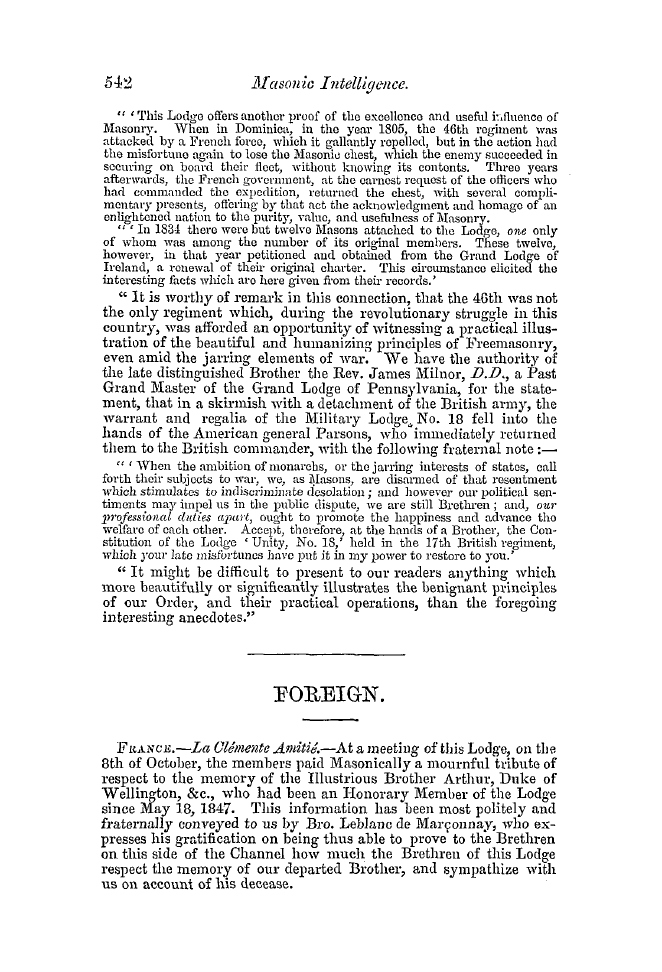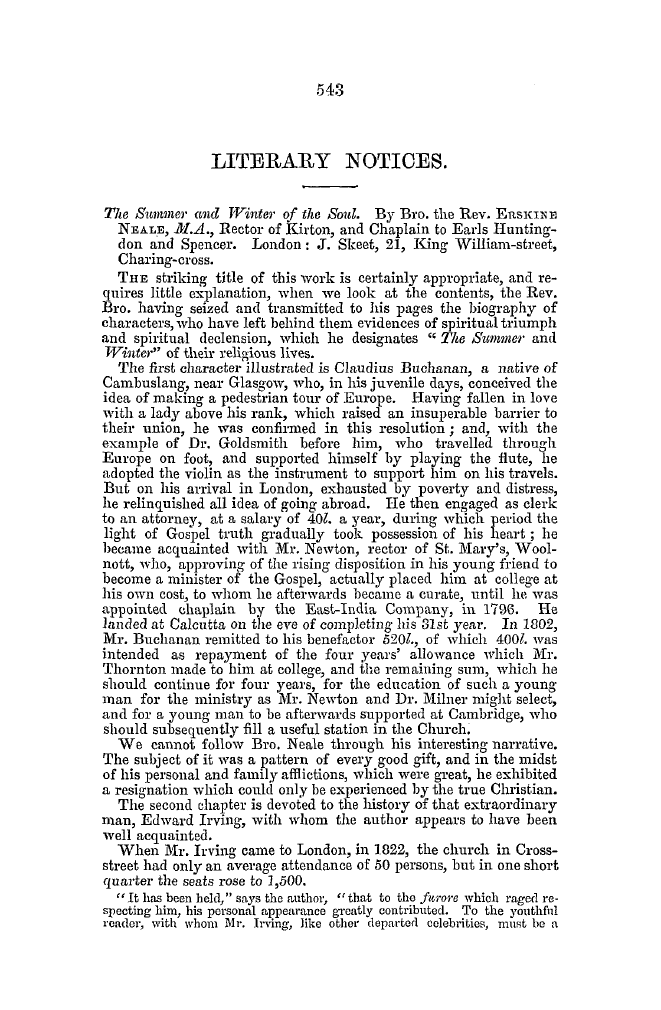-
Articles/Ads
Article LITERACY NOTICES. ← Page 3 of 5 →
Note: This text has been automatically extracted via Optical Character Recognition (OCR) software.
Literacy Notices.
Fortified and assisted by such a galaxy of talent , Dr . Oliver travels through the extensive region of Masonic literature in the most delig htful and perspicuous manner . Every word carries along with it its own history . Every Masonic symbol has its sublime signification , and we regret that , beyond the following quotations , we are unable to convey any just idea of the value of this truly excellent work : —¦
"DOVE . —This bird was tho diluvian messenger ofpoaco , and hovered over the retreating waters like a celestial harbinger of safety . Thus a lunette floating on the surface of the ocean , attended by a dove with an olive-branch in its mouth , and encircled by a rainbow , form a striking and expressive symbol , which needs no explanation . If Freemasonry has allowed this bird to occupy a high situation amongst its hallowed symbols , the reasons for such an appropriation are fully competent to justify the proceeding . The dove was an agent at the creation , at the deluge , and at the baptism of Christ . " "ENDLESS SEBPENT . —The serpent was symbolical of the divine wisdom
, power , and creative energy ; and of immortality and regeneration , from tho shedding of his skin ; and of eternity , when in the act of biting his own tail . Besides these various symbolizations , we are informed that the Egyptians represented the world by a circle intersected by two diameters perpendicular to each other . " —Dean .
The biographical and historical portion of the dictionary is also highly interesting ; the following is a specimen : — "STAR AND STARS . —A star , in hieroglyphieal language , always denoted a God . Thus when Balaam predicted that a star should arise out of Jacob , and a sceptre out of Israel , he referred to the lawgiver of whom tho patriarch had already spoken . A star out of Jacob and a God out of Jacob would therefore be parallel expressions . And who could that God be but the theocratic King of Israel , Jehovah , the Messiah , or Christ . The Master Mason , like the starry
firmament , ought to be able to enlighten tho younger Brethren . Seven stars remind us that seven Brethren make a perfect Lodge . Stars are also employed principally as symbols of groat intellectuality , and this symbol has been perpetuated from the most remote antiquity . The decoration of most spiritual and temporal orders consists of a star . "—Gadiche . "ANDERSON . —Dr . Anderson lived in the beginning of the eighteenth century , and it is from him that we have the so deservedly celebrated Book of Constitutions of the Ancient and Honourable Fraternity of Free and Accepted Masons . The first part contains the history of the Orderand the second
con-, tains the charges , rales , laws , duties , & c , together with an historical account of the origin of the Order . Anderson , in the dedication to the then Prince of Wales , calls himself Secretary to tho Grand Lodge in London , and statos that the work was composed by the command of the Grand Lodge , from its archives , traditions , and Lodge books . Tho first edition appeared in 1723 , a second in 1738 ; since then various editions have been published , viz . one by Entick , in 175 S , one in 1776 , one in 1784 , by Noorthouck , and in 1806 the latest . To the second edition a superior privilege was attached by the Grand Lodge in London , no other constitution-book being allowed in the Lodges but that of Anderson
, and no alteration being allowed to be made in it . Although hi this work the history of Freemasonry is carried back to the creation , yet the information it has been the means of preserving with regard to tho duties of a Freemason , the constitutions of tho Order , and the history of the English Lodges , make it a valuable work , and cause it to be highly prized by every Lodge and every Brother . In the first edition no mention is made of the formation of the Grand Lodge in London hi 1717 , but is added to tho second edition . There is a German translation published at Frankfort-on-the-Maine , and various French editions . "—Gaclicke .
"ACHILLES . —Perhaps some worthy people may stare when we point out Achilles as a Freemason . ' What ! ' we hear them exclaim , ' is it possible that that fierce and ferocious man-slayer , nay , man-eater at heart—for he exhibited a strong propensity to cannibalism in longing to have devoured the dead body of Hector—is it possible that he conk ! have been one of our philanthropic society ? ' Yes , we reply , such is the actual fact : and Bonaparte was one too , VOL . III . -1 B
Note: This text has been automatically extracted via Optical Character Recognition (OCR) software.
Literacy Notices.
Fortified and assisted by such a galaxy of talent , Dr . Oliver travels through the extensive region of Masonic literature in the most delig htful and perspicuous manner . Every word carries along with it its own history . Every Masonic symbol has its sublime signification , and we regret that , beyond the following quotations , we are unable to convey any just idea of the value of this truly excellent work : —¦
"DOVE . —This bird was tho diluvian messenger ofpoaco , and hovered over the retreating waters like a celestial harbinger of safety . Thus a lunette floating on the surface of the ocean , attended by a dove with an olive-branch in its mouth , and encircled by a rainbow , form a striking and expressive symbol , which needs no explanation . If Freemasonry has allowed this bird to occupy a high situation amongst its hallowed symbols , the reasons for such an appropriation are fully competent to justify the proceeding . The dove was an agent at the creation , at the deluge , and at the baptism of Christ . " "ENDLESS SEBPENT . —The serpent was symbolical of the divine wisdom
, power , and creative energy ; and of immortality and regeneration , from tho shedding of his skin ; and of eternity , when in the act of biting his own tail . Besides these various symbolizations , we are informed that the Egyptians represented the world by a circle intersected by two diameters perpendicular to each other . " —Dean .
The biographical and historical portion of the dictionary is also highly interesting ; the following is a specimen : — "STAR AND STARS . —A star , in hieroglyphieal language , always denoted a God . Thus when Balaam predicted that a star should arise out of Jacob , and a sceptre out of Israel , he referred to the lawgiver of whom tho patriarch had already spoken . A star out of Jacob and a God out of Jacob would therefore be parallel expressions . And who could that God be but the theocratic King of Israel , Jehovah , the Messiah , or Christ . The Master Mason , like the starry
firmament , ought to be able to enlighten tho younger Brethren . Seven stars remind us that seven Brethren make a perfect Lodge . Stars are also employed principally as symbols of groat intellectuality , and this symbol has been perpetuated from the most remote antiquity . The decoration of most spiritual and temporal orders consists of a star . "—Gadiche . "ANDERSON . —Dr . Anderson lived in the beginning of the eighteenth century , and it is from him that we have the so deservedly celebrated Book of Constitutions of the Ancient and Honourable Fraternity of Free and Accepted Masons . The first part contains the history of the Orderand the second
con-, tains the charges , rales , laws , duties , & c , together with an historical account of the origin of the Order . Anderson , in the dedication to the then Prince of Wales , calls himself Secretary to tho Grand Lodge in London , and statos that the work was composed by the command of the Grand Lodge , from its archives , traditions , and Lodge books . Tho first edition appeared in 1723 , a second in 1738 ; since then various editions have been published , viz . one by Entick , in 175 S , one in 1776 , one in 1784 , by Noorthouck , and in 1806 the latest . To the second edition a superior privilege was attached by the Grand Lodge in London , no other constitution-book being allowed in the Lodges but that of Anderson
, and no alteration being allowed to be made in it . Although hi this work the history of Freemasonry is carried back to the creation , yet the information it has been the means of preserving with regard to tho duties of a Freemason , the constitutions of tho Order , and the history of the English Lodges , make it a valuable work , and cause it to be highly prized by every Lodge and every Brother . In the first edition no mention is made of the formation of the Grand Lodge in London hi 1717 , but is added to tho second edition . There is a German translation published at Frankfort-on-the-Maine , and various French editions . "—Gaclicke .
"ACHILLES . —Perhaps some worthy people may stare when we point out Achilles as a Freemason . ' What ! ' we hear them exclaim , ' is it possible that that fierce and ferocious man-slayer , nay , man-eater at heart—for he exhibited a strong propensity to cannibalism in longing to have devoured the dead body of Hector—is it possible that he conk ! have been one of our philanthropic society ? ' Yes , we reply , such is the actual fact : and Bonaparte was one too , VOL . III . -1 B



































































